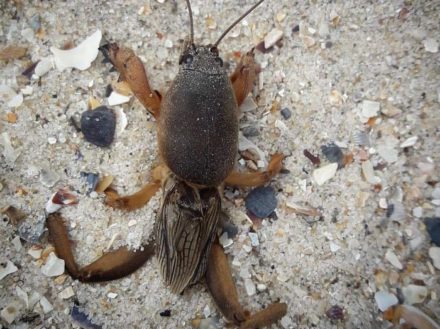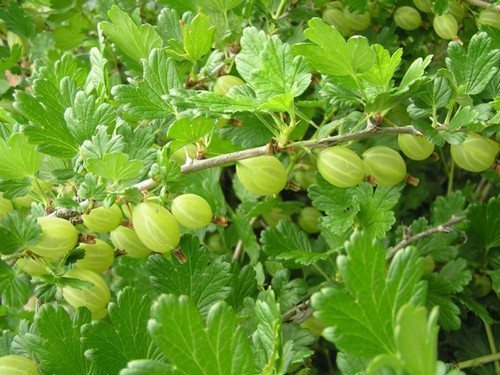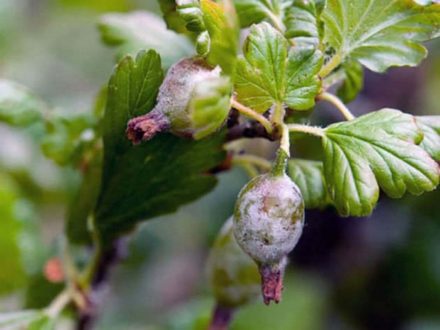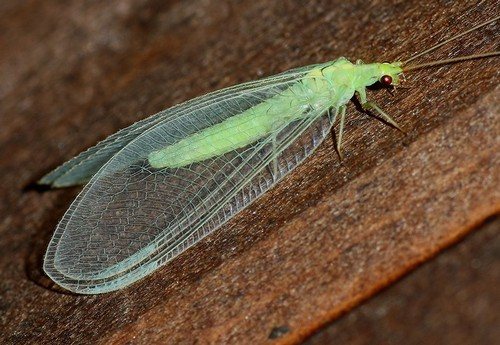Many indoor flowers are attacked by various pests that don’t mind enjoying their delicious juice. One of the most dangerous among them is the mealybug.
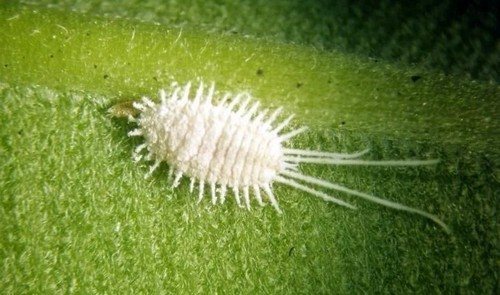
In appearance, this insect resembles small lumps of cotton wool. In addition to the fact that the mealybug drinks the juices from the leaves, it also leaves behind a sticky trail, thanks to which the spores of the sooty fungus stick very well to the plant. The scale insect has excellent legs, so it easily attacks all indoor flowers.
The peculiarity of this pest is that it can be:
- sheet;
- root.
Of course, the leaf one is easier to detect than the root one, since the presence of the second species can only be known if you remove the soil from the pot and examine the roots and walls of the container, where these tiny white lumps will be visible.
In general, there are about 1,600 species of scale insects in the world. The most common among them are: bristly, grape and seaside mealybugs.
- A peculiarity of the bristly pest is that the females and larvae destroy plant leaves. This type of parasite is viviparous. The length of the female reaches 3.5 mm, it is pink or orange in color and covered with a white coating. Leaves damaged by this parasite fall off. The pest itself likes to get under the scales of citrus fruits or the peel of bulbous plants.
- The grape bug is very similar to the bristle bug. Its peculiarity is that it has well-developed legs and quickly spreads over the entire surface of the flowers.Males of this species are very rare among them. Colonies of parasites suck out the juices and the leaves turn yellow and the sprouts dry out.
- The seaside mealybug is the most common species. Males have wings and fly well. The females are busy looking for a place to lay eggs. Cracks in the bark and curled leaves are most suitable for this. The eggs hatch into yellow, mobile larvae that are not yet covered with a protective coating and are very vulnerable to various chemicals.
Methods of pest infection
There are 2 ways of infection with this parasite:
- It ends up on home flowers along with a new plant or seedling purchased from a store.
- It can be brought in with soil taken from the garden.
For the favorable development of this pest, room temperature and high humidity will be sufficient.
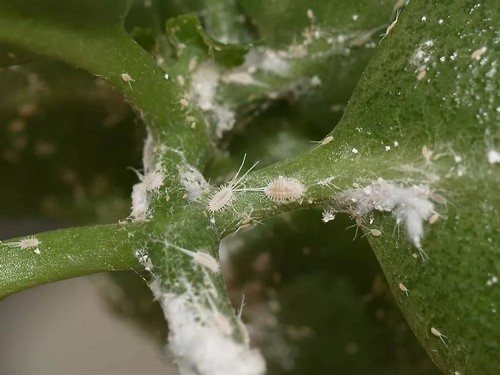
Threat to flowers
Mealybugs pose an irreparable threat to plants, as they lose their decorative appearance:
- leaves change color;
- turn yellow;
- fall;
- affected areas form brown spots;
- flowers are susceptible to fungal and bacterial diseases.
How to get rid of mealybugs
This parasite should not be underestimated, as even a few visible individuals can cause a lot of problems. Even small numbers can be difficult to eradicate.
The fight against mealybugs takes place in 3 stages:
- Collection of pests and their eggs.
- Preliminary spraying with a soap-alcohol solution.
- Treatment of plants with pesticides.
Before proceeding to the processing of green spaces, it is necessary to remove all visible individuals, as well as their clutch, from the flower using cotton wool or a cotton swab. They do this because the mealybug is very resistant to various drugs. In addition, it is necessary to periodically change the cotton swab so as not to spread the parasite over the surface of the plants.
After this comes the second stage, which consists of using a soap solution. To prepare it you need to take 1 tsp. grated laundry soap or dishwashing detergent and dissolve it in 1 liter of warm water. You must also add 1 tbsp. l. alcohol or 2 tbsp. l. vodka. Wipe the plant with the resulting product using a sponge. This solution will not kill the parasite, but it will weaken its protective coating and make it much easier to deal with.
The most popular and effective chemical preparations that will rid your favorite flowers of entire colonies of this pest are Aktara, Fitoverm and Mospilan.
However, when using them, you should strictly adhere to the dosage specified in the instructions. It would also be good to carry out this procedure at least on the balcony or on the street. Be sure to wear a protective mask and rubber gloves that will protect the body from the harmful effects of chemicals.
In addition, there are a lot of folk methods that will help rid the plant of mealybugs. The most common of them include:
- Garlic tincture. 60 grams of this vegetable are poured into 1 liter. boiling water and leave for about 7 hours. After this, the product is filtered and sprayed on the green “pet”. This procedure must be repeated about 4 times with an interval of 5 days.
- Olive oil. Only 2 tbsp. l. dissolve in 1 liter. warm water and spray the plant with it according to the same above scheme as with garlic tincture.
- Horsetail tincture. You can buy it at the pharmacy and dilute it a little with water and spray it three times at weekly intervals.
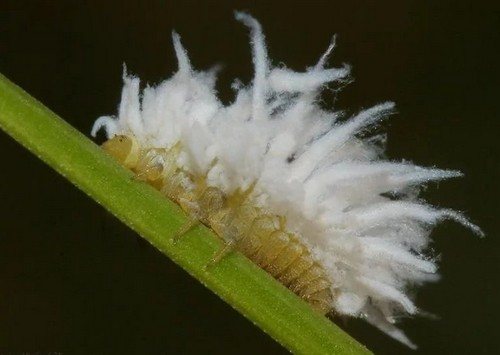
Particular attention should be paid to the extermination of root mealybugs. If this parasite is detected in the soil, you must:
- throw away all the soil from the pot;
- rinse the roots of the plant under water at room temperature;
- dip the roots in any chemical for a quarter of an hour;
- the flower should be planted in new, fresh soil and watered with water, and after 7 days the plant should be watered with a chemical preparation. However, for watering it is better to use a powder mass, dissolving it in water, and not ready-made liquid products that can burn the roots of flowers.
Many gardeners believe that it is best not to waste time on spraying, since the mealybug has a strong protective shell. Therefore, the affected plant must be watered with insecticide so that it absorbs it and the leaves of the flower become poisonous. The mealybug, sucking out the juice, will also absorb poison, which will certainly destroy it. The parasite will eventually begin to dry out and will no longer be able to exist.
Preventive measures
To avoid having to wage a long and tedious fight against this pest, it is best to follow the following preventive measures:
- Carry out regular inspection of green spaces. Particular attention should be paid to the underside of the sheets.
- Since this parasite loves musty, dry air, it is necessary to regularly ventilate the room, water and spray the flowers.
- It is imperative to remove dried and yellowed leaves.
- If you prepare the soil yourself, then it must be disinfected.
- Occasionally wipe the flower with a soft sponge.
- A newly purchased flower must undergo a three-week quarantine, during which the plant is carefully inspected.
You can also find protective granules or root sticks in stores. However, you should definitely be careful with them, since they contain fertilizer, and salts in excessive quantities can burn the roots of some plants.
No matter how difficult it may seem to fight this parasite, you still should not throw the plant to be devoured by this monster. If you properly care for flowers, they will definitely delight you with their beauty.



